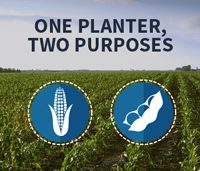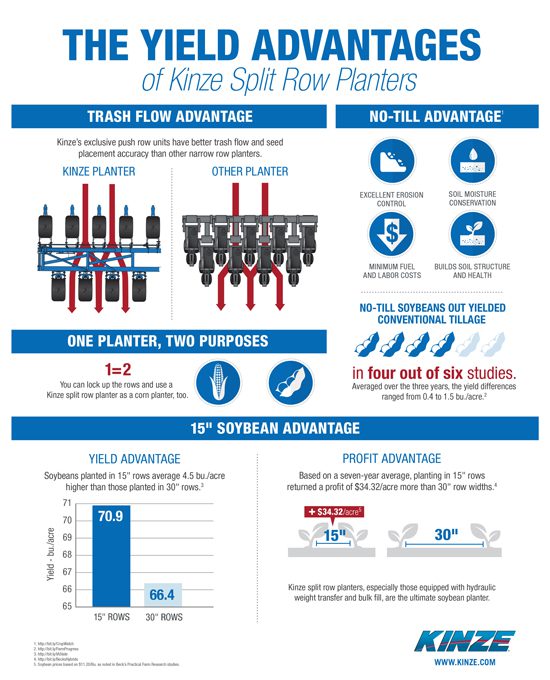When Kinze introduced the Planter Split Row System with “push-type” row units back in 1983, the basic premise was a row crop planter that was convertible between narrow and wide row spacing.

The Split Row Planter, or “Interplant System” as it was also referred to, helped farmers truly “split the rows.” They now had the capability to plant corn (30, 36 or 38 inch rows), then quickly convert to soybeans (15, 18 or 19 inch rows) by engaging the push-type units.
Two Crops, One Planter.
The Split Row System offered several other advantages compared to the narrow row planters of the day. Staggering the push-type row units and mounting them on twin frames helped improve trash flow and seed placement accuracy, provided better weight distribution across the planter frame, and improved row unit access for ease of maintenance.
It’s easy to see then why so many blue planters started popping up in fields across America.
Today, Kinze Split Row Planters continue to be popular among farmers who want to plant 15″ soybeans and 30″ corn with the same planter, and who want superior trash flow – especially in no-till.
Of course, one thing all growers want is higher yields. This infographic highlights some of the yield advantages of Kinze Split Row Planters. Check it out and contact us if you’re wondering whether this type of planter is right for your operation.

